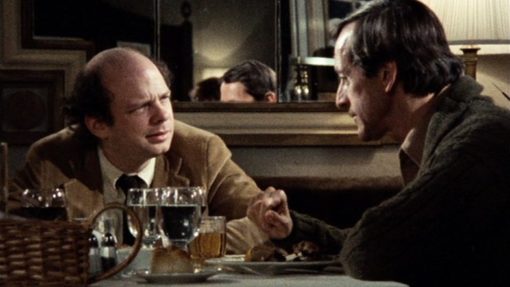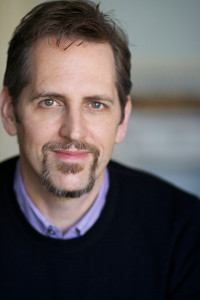When writing dialogue, it’s easy to fall into the trap of “information exchange” scenes. This is when characters give each other information, opinions, stories about their past, etc. and nothing happens to move the story forward.
Such scenes tend to just sit there on the page and not really engage the reader.
By contrast, the best scenes (and the dialogue within them) tend to focus on the main character of a story wanting and trying to get something, or dealing with an impediment to their desire, and facing conflict as they pursue it.
Such scenes move the story forward and are an integral part of it because something happens in them that changes the game around the main story problem, often complicating it in some way. And the dialogue is in service to that.
So instead of characters just telling each other things or talking about stuff in a low-conflict way, dialogue is part of how the main character of the story (and that scene) goes about trying to solve their problem, reach their goal, and move through whatever difficulties or conflict are in that scene. It matters how this turns out — to the character and the audience — and this produces a strong emotional rooting interest.
At least, this is how it works in contemporary mainstream commercial American filmmaking.
The photo at the top of this post is from 1981’s My Dinner with Andre, an unconventional sort of film in which two people have a lengthy conversation about a variety of topics, but there is no strong problem or desire one of them is pursuing that the movie is focused on. The topics might be interesting and even emotional at times, and the film is well-made, but it purposefully does not strive for what most of us (and the TV/film business) are looking for in a script.
Another example of a “talky” movie with a lot of “information exchange” might be Richard Linklater’s Before Sunrise, which led to two sequels, and basically consisted of two people talking about a variety of things. The difference there, I would argue, is that there was big romantic tension and the question of whether these two would get together and what their future might be. In other words, their evolving conversations had a high degree of life stakes and emotion, and even fit a genre — love story.

These examples are consciously experimental. Like certain “one-act” films, they defy traditional three-act structure to a large extent. They’re not so much focused on a character trying to solve a problem that strongly develops in the middle.
Assuming you’re not going for such an approach, and are not an indie filmmaker with the capability of pulling off an arty project like that, but want something with more mainstream appeal as a script, I would offer the following suggestions:
Give each scene a main character through whose perspective the audience experiences that scene. This is where it all starts. Viewers need to experience scenes and stories subjectively, emotionally, personally — which means through a particular character’s perspective. Don’t have them look “at” multiple characters with no one person driving the scene with their desires. I would especially avoid group scenes where multiple people speak who the audience doesn’t know that well or have a strong emotional connection to. Their interest in the scene and engagement with it comes largely from them having that connection to a particular person and watching to see how they’re going to try to get what they want in a scene, and react to what others do and say.
Usually the best scenes are focused on the main character of the movie, or one of multiple main characters with their own “story” in an ensemble movie or TV episode. In other words, a character who has a strong PROBLEM that is at the heart of the story (whether a movie or for that episode), which is something they’re grappling with and trying to resolve. Every scene is a step in that process that develops that problem in some new way, and focuses on them trying to do something and encountering conflict. By the end of the scene, something has changed that affects the status of the story moving forward and leads to new scenes.
In the process of trying to solve their problem, this character might get information or give information of some kind. If this “information exchange” is part of them actively pursuing what they want or being impacted by how the problem is evolving, then it could be okay. As long as it’s believable naturalistic dialogue, which means it’s not just people “speaking information” that the audience needs to know. This would violate the “show don’t tell” rule. It’s almost always better to use dramatic scenes that reveal information to the audience rather than having people speak it. The audience gets it more and enjoys such scenes more, and it seems more real than wooden expositional dialogue. However, if you have to have some information delivered through speech, it works best when it’s information the main character needs, which affects the status of their problem and what they’re doing to try to solve it. And when the audience gets it at the same time as this character, it helps them stay bonded with them emotionally, which I consider to be all-important in any story.
When it’s the main character giving information, usually that works best when it’s something the audience already knows about through prior scenes. When the main character surprises the audience by telling other people things the audience didn’t know, it tends to distance the audience from the character and make them feel like they don’t really know them, and aren’t living their life with them the way they do in the most involving stories. It’s usually better to show the character go through experiences of difficulty, emotion, and conflict, and to show them arrive at key decisions, than to have them suddenly do or say things where the audience doesn’t quite know where they’re coming from. It’s fine if other characters do that, but the audience’s relationship with the main character tends to require being in more lockstep with them and “inside” them and their evolving thoughts, feelings, experiences and plans.
Some good scenes have multiple characters in them with desires the audience understands and relates to, with a strong emotional connection to more than one character in the scene. This especially happens in series where different regular cast members interact who the audience knows well. They might each have a “story” in that episode that this scene is advancing in some way, and each of their points of view become the audience’s point of view to the extent that they’re grappling with a problem the audience gets and cares about. That’s fine, because the audience’s emotional connection and understanding of the characters gives them a level of investment and engagement, especially when something is on the line for each character. It could be said that audiences experience such scenes from more than one point of view simultaneously.
What is far more problematic is when no one has a strong problem in the scene that they’re trying to solve, and the audience has no one to really connect with, or a strong reason to care about the scene. Where there’s no strong conflict and people are just kind of getting along. Where there’s no strong emotion but more just ideas, information, memories and opinions being bandied about. Where the dialogue lacks subtext and people are just blandly speaking about something they know or believe. And where the audience can’t really connect emotionally to what someone is going through or trying to achieve. Where it’s more just intellectual or cerebral.
My advice is this: if your characters are doing this, in any scene, ask yourself why. Whatever your goal is with the scene (and often it’s to give the audience information they need), it’s almost always better find a more dramatic, emotional, story-developing, problem/conflict-focused scene instead.



Thanks, Eric, for sharing the real purpose of dialogue — create emotional driven conflict and avoid unloading expository info.
Hi Erik, personally I love movies like ‘My dinner with Andre’ and as you say talky art films like Eric Rohmer, and you’re right, you have to make a choice of what kind of writer you are. It does sometimes seem a shame that we have to put less conventional films in a kind of ‘independent’ or ‘arthouse’ ghetto, but hey, I guess that’s just the reality of the marketplace. You can write that but it’ll be harder to sell and it better be distinctive, and it still has to entertain. If you want to reach an audience you have to consider what audience you are targeting. It can be tough doing that and still retaining your own voice as a writer, and I think the problem can be that it often leads to writers attempting to second guess what the market wants. But I think you can say, the best scripts, for whatever audience, do manage to balance the uniqueness of the writer’s voice with delivering something the market wants too. Really interesting post, thank you
Well said, Graham, and I can’t say that I disagree! Thanks for the comment…
Great information!!! I already know a scene I need to fix.
Jane
Thanks Jane – that’s great to hear!
“the audience’s relationship with the main character tends to require being in more lockstep with them and “inside” them and their evolving thoughts, feelings, experiences and plans.” Great insight. I’ve understood avoiding conversations that only exchange information for a long time, but I have noticed that some pieces that draw me on do have information exchange conversations. Now I realize they are between minor characters. Thanks! Marv Waschke
My pleasure, glad you found it useful Marv!
What would be the difference in this case, between film and novels?
No difference in my view. Reading characters talk when there isn’t point-of-view, agenda, difficulty, etc. is to be avoided as much as showing them do that on screen.
Novels can go inside a character’s head more, but even then, what’s interesting are the conflict, problems, emotions, desires, strategies, concerns, etc. Not the information.
Thanks, Erik, for your latest blog on using dialogue to move your story forward instead of being just information exchange. As I continue my rewrite on my latest screenplay, I will be checking each character’s dialogue to see if it is showing that character’s need to solve a problem or meet a goal.
I enjoy all of your blogs. Thanks for sending them. Bonnie Olive
Thanks so much Bonnie!